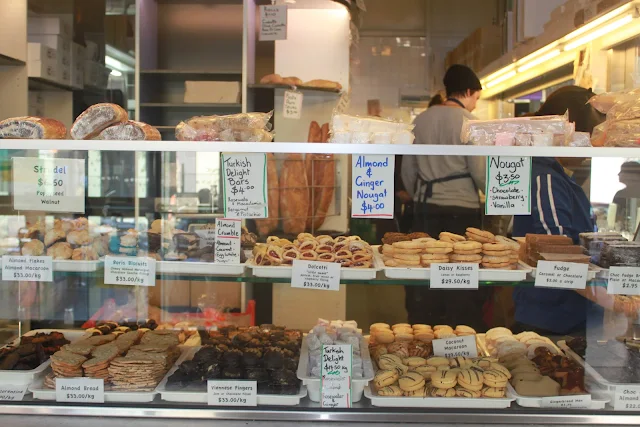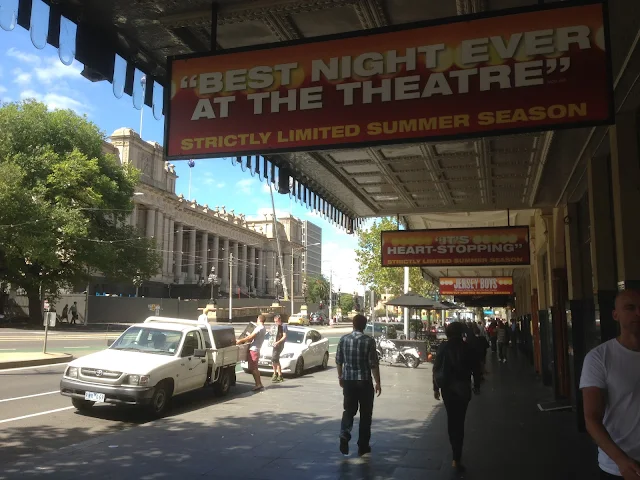The Vic markets have been in operation since 1878. There are covered halls, open air stalls and old fashioned market alleys. Fast food and more can also be found in the series of shops adjacent to the markets proper. It forms a unique suburban shopping town in its own right, although it is easily walkable to the site after alighting from one of the complimentary City Circle trams on the northern side of Melbourne CBD.
Open every day, except for Wednesdays, the stallholders are there mostly from 6am to 2pm, although there is a later start on lazy Sunday mornings from 9am. The Dairy Hall is a particular attraction although I recommend walking around with an open mind and you never know what delights and surprises you may find in store. For us on a March afternoon, we found delicious figs, touristy souvenirs like the trams and even the Sydney Harbour ferry plus a whole host of nutty produce at better prices than in Sydney.
There are the expected encounters with clothes, jewellery, breads, fruits, buskers, farm fresh eggs, China made stuff, Aussie originals, fast food and organic produce. The floors are relatively dry and clean and not difficult to navigate. You can also source gourmet and deli supplies apart from the well known tradition of trying jam donuts.
These are the largest markets of its kind south of the Equator. Pirated goods used to be the controversial profile of the Vic Markets in the first half of the nineties. Solar panels were set up to provide renewable and cleaner energy arrangements for the markets in 2003. There was even a significant attempt to close these markets in the seventies. The site of such markets overlapped with pre-existing burial grounds and there had to be re-interment of buried human remains to accommodate the expansion of the markets.
For those who prefer more of agricultural produce and displays, there are farmers' markets in Echuca, Mytrleford, Mulgrave, Flemington, Torquay, Inverloch , Boorondara and Hume Murray outside Melbourne CBD. Also worthy to check out in Melbourne city centre are the Prahran and South Melbourne markets.





















































